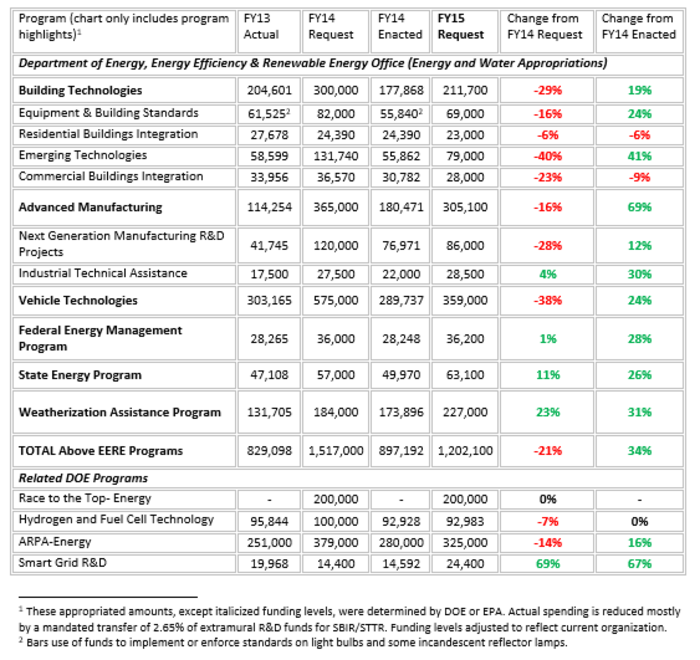POTUS Calls for More Energy Efficiency, Less Waste
Let's Save Energy
Alliance to Save Energy's Blog

Tuesday, March 4, 2014, marked the release of the President's budget request for fiscal year 2015. Once again President Obama backed his commitment to doubling energy productivity and cutting energy waste with strong financial support for energy efficiency programs throughout the federal government.
“The budget is not just about numbers,” the President said, “it’s about our values and it’s about our future.” The Alliance to Save Energy could not agree more. To achieve the President’s goal of doubling energy productivity by 2030, major investments must continue to be made in the efficiency industry to spur innovation. If Congress supports the president’s budget and these key investments, our nation will be on a clear path towards a more robust economy, a cleaner environment, and increased energy security.
Within the 2015 budget request, the Office of Energy Efficiency & Renewable Energy (EERE) would see its discretionary appropriations increased by 22% as compared to 2014. EERE is considered the research and development hub of the Department of Energy, responsible for investing in promising and sometimes untested renewable and efficiency technologies that can pay huge dividends in the future.
Under the president’s budget, programs in advanced manufacturing (+69%), smart grid research and development (+67%), emerging technologies (+41%), and weatherization assistance (+31%) would receive significant bumps in their budgets to accelerate the development and deployment of new energy efficiency technologies. In total, energy efficiency programs within EERE would receive roughly 34% more in discretionary appropriations than they do under the FY 2014 budget.
The President’s budget also requests full funding for the Race to the Top for Energy Efficiency and Grid Modernization. This new program, modeled after the successful “Race to the Top” initiative within the Department of Education, would support State governments that implement policies that increase energy productivity and localities that make investments in electrical grid modernization.
Another notable program to receive greater funding is the Rural Energy for America Program (REAP) within the Department of Agriculture. This loan guarantee program provides financing for energy efficiency upgrades, energy audits, and feasibility studies to agricultural producers and rural small businesses, supporting the President’s Climate Action Plan. Under the President’s budget, REAP would receive $47 million in discretionary funding for grants and loan guarantees, up from $13 million in 2014.
The Alliance supports the efforts by the President and his administration with the goal of doubling energy productivity. By incorporating many of the recommendations from our own Energy 2030 report in his budget, the President is spurring innovation and leading by example. This budget is just another step in realizing a more efficient economy, a cleaner environment, and increased energy security.
For more information, see the Alliance's updated budget chart
Policy and Research Assistant Jordan Nichols contributed to this post.
RECENT BLOG POSTS
STAY EMPOWERED
Help the Alliance advocate for policies to use energy more efficiently – supporting job creation, reduced emissions, and lower costs. Contact your member of Congress.
Energy efficiency is smart, nonpartisan, and practical. So are we. Our strength comes from an unparalleled group of Alliance Associates working collaboratively under the Alliance umbrella to pave the way for energy efficiency gains.
The power of efficiency is in your hands. Supporting the Alliance means supporting a vision for using energy more productively to achieve economic growth, a cleaner environment, and greater energy security, affordability, and reliability.




